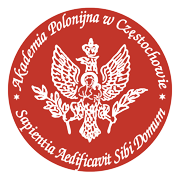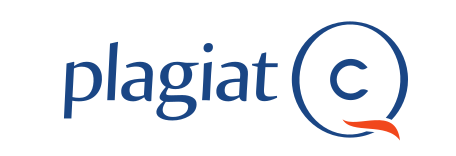POLITICAL COMMUNICATION IN THE CONTEXT OF HYBRID THREATS: A STRATEGIC RESOURCE FOR NATIONAL SECURITY
Abstract
The article examines political communication in the context of hybrid threats and the full-scale war against Ukraine, viewing the information space as a critical battlefield of contemporary confrontation. It demonstrates that communication is no longer merely an auxiliary tool but has evolved into a strategic resource of national security, shaping the legitimacy of decisions, mobilizing public support, and influencing the international reputation of the state.The theoretical framework is grounded in approaches that conceptualize hybrid warfare as a synergy of military and non-military methods of influence, including cyberattacks, information campaigns, and economic pressure. Within this configuration, the cognitive dimension becomes especially significant, as the creation of an alternative reality through manipulative narratives and microtargeting complicates the distinction between a state of war and “normal” politics.The Ukrainian case highlights the systematic and large-scale nature of informational aggression aimed at delegitimizing institutions and polarizing society. At the same time, coordinated strategic communications have enabled the alignment of messaging across governmental bodies, the development of a unified narrative, and the maintenance of both internal cohesion and external support.Methodologically, the article employs an interdisciplinary toolkit: discourse and content analysis to identify semantic constructs and recurring themes; case studies to trace the dynamics of crisis campaigns; surveys and statistical modeling to measure effects; network analysis to pinpoint nodes of information dissemination; and disinformation monitoring using AI alg rithms to detect anomalies in content propagation.Practical recommendations are structured around three key areas: prevention, coordination, and response. They include principles of transparency, accuracy, and timeliness; continuous information dissemination to avoid creating a “vacuum”; institutionalization of fact-checking and debunking mechanisms; development of value-driven and inclusive narratives; partner-ships between the state, civil society, media, and opinion leaders; and enhanced collaboration with social media platforms.
References
2. Mansoor, P. R. (2012). Introduction. In W. Murray & P. R. Mansoor (Eds.), Hybrid warfare (pp. 1–17). Cambridge. https://doi.org/10.1017/cbo9781139199254.001
3. Hybrid CoE. (2023.). Hybrid threats as a concept – Hybrid CoE – The European Centre of Excellence for Countering Hybrid Threats. Retrieved from https://www.hybridcoe.fi/hybrid- threats-as-a-phenomenon/
4. Zuiderveen Borgesius, F. J., Möller, J., Kruikemeier, S., Fathaigh, R. Ó., Irion, K., Dobber, T., Bodo, B., & de Vreese, C. H. (2018). Online political microtargeting: Promises and threats for democracy. Utrecht Law Review, 14(1), 82. https://doi.org/10.18352/ulr.420
5. Koch, H. (2024). Strategic communications in the global security environment: StratCom’s shift of the balance of power. MacEwan University Student eJournal, 8(1).
6. Barovska, A. (Ed.). (2016). Informatsiini vyklyky hibrydnoi viiny: kontent, kanaly, mekhanizmy protydii [Information challenges of hybrid war: Content, channels, counteraction mechanisms]. Kyiv: NISD. Retrieved from https://niss.gov.ua/sites/default/files/2016-06/inform_vuk-luku.pdf [in Ukrainian]
7. Bastos, M., & Mercea, D. (2017). The Brexit botnet and user-generated hyperpartisan news. Social Science Computer Review, 37(1). https://doi.org/10.1177/08944393177341
8. Bukanov, H. (2025). Politychna komunikatsiia vlady i suspilstva v umovakh voiennoho stanu v Ukraini [Political communication between the government and society under martial law in Ukraine]. Visnyk NTUU "KPI" Politolohiia. Sotsiolohiia. Pravo, 2(66), 72–78. https://doi.org/10.20535/2308-5053.2025.2(66).337624 [in Ukrainian]
9. Vosoughi, S., Roy, D., & Aral, S. (2018). The spread of true and false news online. Science, 359(6380), 1146–1151. https://doi.org/10.1126/science.aap9559
10. Tarielkin, Yu., & Tsykyn, V. (2010). Metodolohiia naukovykh doslidzhen [Methodology of scientific research]. Sumy: SumDPU im. A. S. Makarenka. Retrieved from https://library.sspu.edu.ua/wp-content/uploads/2018/04/42-1.pdf [in Ukrainian]
11. Khudolii, A. (2014). Politychnyi dyskurs yak obiekt linhvistychnoho analizu [Political discourse as an object of linguistic analysis]. Naukovi zapysky Natsionalnoho universytetu “Ostrozka akademiia”, 42, 174–177. [in Ukrainian]
12. Bataieva, K., et al. (2018). Suchasni metodyky kontent-analizu [Modern methods of content analysis]. Kyiv: Kondor. [in Ukrainian]
13. Elstub, S., & Pomatto, G. (2022). Case study research. In Research methods in deliberative democracy (pp. 406–420). https://doi.org/10.1093/oso/9780192848925.003.0028
14. Zaiets, O. (2024). Analiz sotsialnykh merezh [Social network analysis]. In Metody, instrumenty ta trendovi novatsii kryminalnoho analizu v Ukraini (pp. 359–366). Retrieved from https://www.researchgate.net/publication/381385861_Analiz_socialnih_merez [in Ukrainian]
15. Ostapenko, M. (2012). Politychna komunikatsiia: teoretychni aspekty doslidzhennia [Political communication: Theoretical aspects of research]. Politychnyi menedzhment, 3, 135–144. Retrieved from https://ipiend.gov.ua/wp-content/uploads/2018/08/ostapenko_politychna.pdf [in Ukrainian]
16. Arcos, R., Brandt, M., Fernández-García, N., & Gil-Ortega, M. (2022). Responses to digital disinformation as part of hybrid threats: A systematic review on the effects of disinformation and the effectiveness of fact-checking/debunking. Open Research Europe, 2, 8. https://doi.org/10.12688/openreseurope.14088.1
17. Hlynskyi, N., & Donets, V. (2025). Vplyv lideriv dumok na hromadsku dumku i povedinku molodi: komunikatsiinyi aspekt [The influence of opinion leaders on public opinion and youth behavior: A communication aspect]. Menedzhment ta pidpryiemnytstvo v Ukraini: etapy sta- novlennia ta problemy rozvytku, 1(25), 142–151. Retrieved from https://science.lpnu.ua/sites/default/files/journal-paper/2025/may/38876/250524maket-144-153.pdf [in Ukrainian]
Abstract views: 13 PDF Downloads: 6







